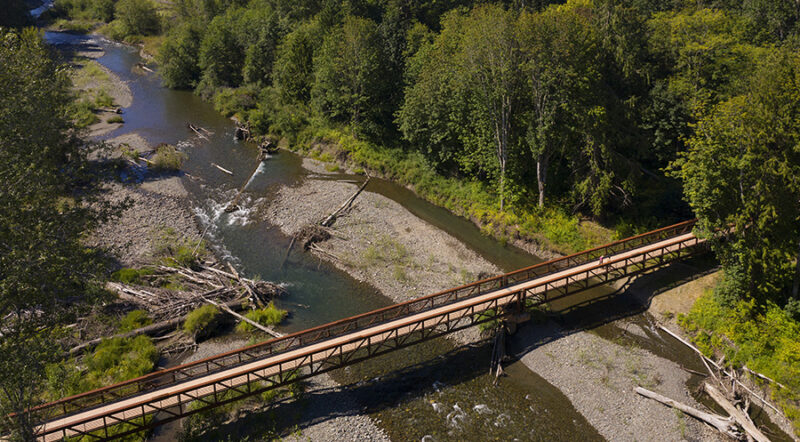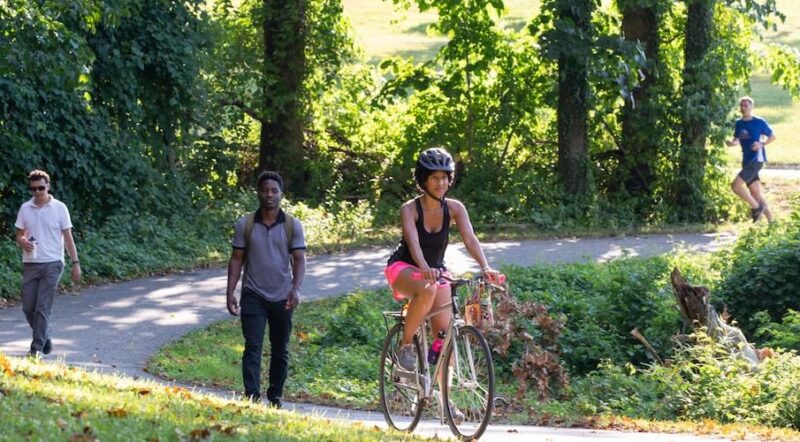E-Bikes Got This Baby Boomer Back on the Trail After Asthma
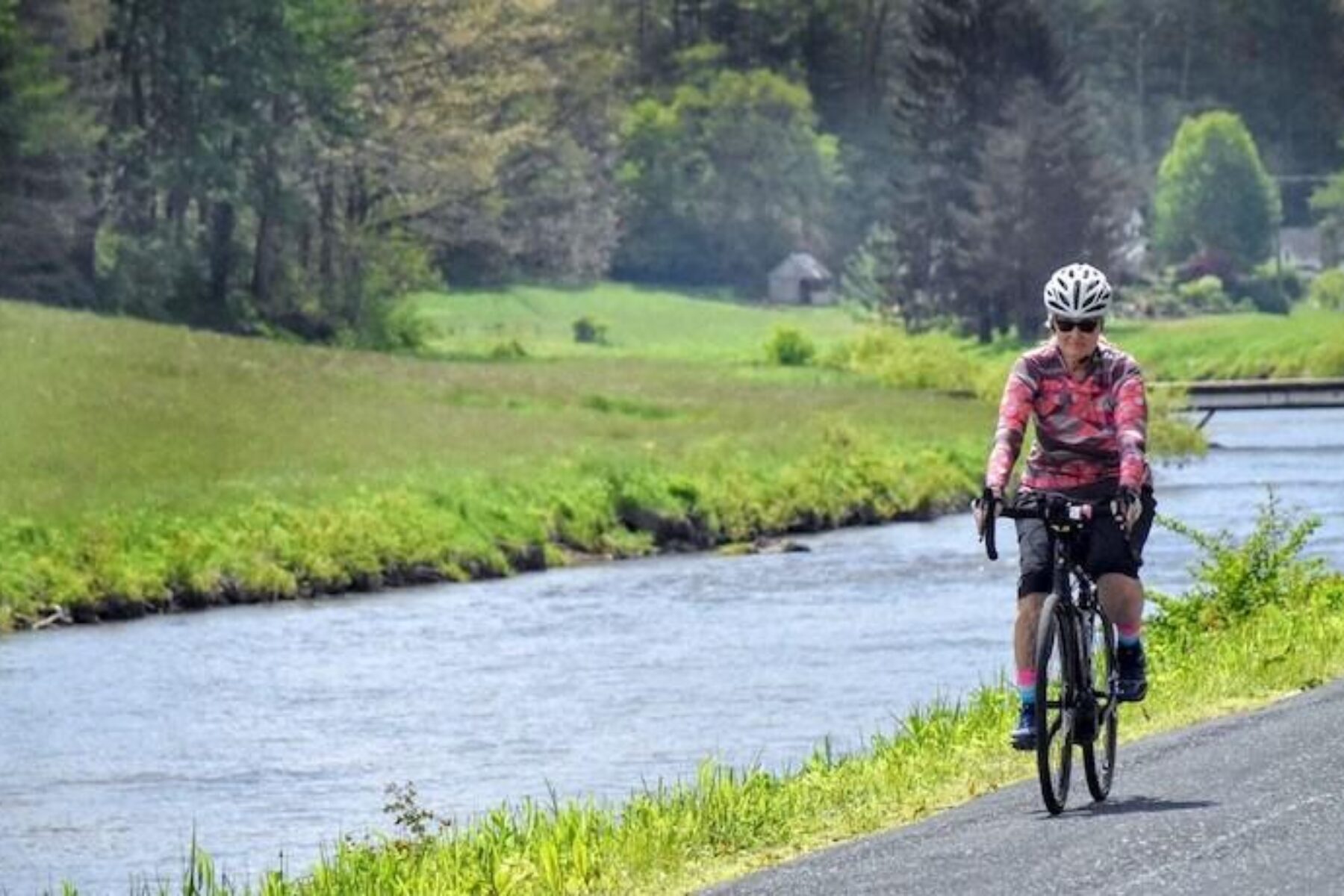
When I was in my mid-50s, a very active friend got me bicycling for fitness and outdoor recreation. My husband Martin quickly caught bike fever too, and we discovered that nothing beats exploring new places from the seat of a bicycle.
Local rides morphed into multiday events and cycling vacations. Any time spent on a bicycle is exhilarating, especially on greenways and rail-trails with no worries of car traffic.
“[E-bikes] reopened a door to active travel opportunities that I thought were over, while still providing me with the option of a good workout.”
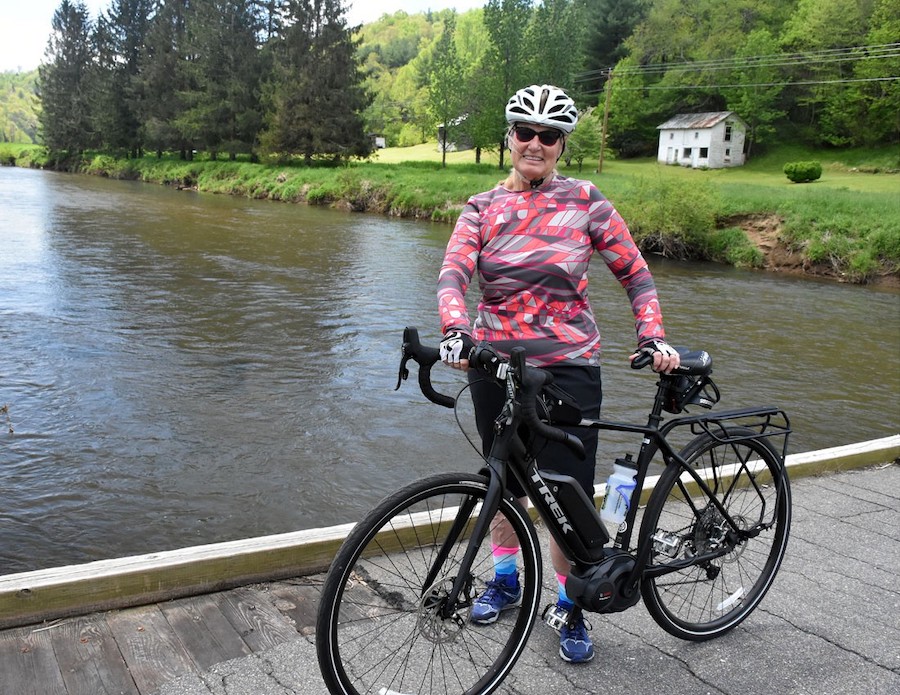
Just four years after discovering bicycling, adult-onset asthma left me lagging behind. The joy I’d found riding gave way to fear of asthma attacks and scary moments as I’d try to catch my breath trailside. After walking my bike up many hills and being saved by good Samaritans who stopped to help, it seemed my riding days were over.
That changed when I discovered e-bikes (electric-assist bicycles). They reopened a door to active travel opportunities that I thought were over, while still providing me with the option of a good workout.
Riding an e-bike for the first time was exhilarating. I met my first electric bicycle in California wine country, home to hills that challenged my lungs. A one-day rental there led to a weeklong adventure in Hawaii, followed by my first of two e-bike purchases three years ago. Since then, I’ve logged more than 1,000 road and trail miles, and for me, it’s been a win-win. No more sitting on the side of the road waiting to be picked up because I could go no farther, and no fear of ending up in the hospital due to an asthma attack.
Just the thrill of riding and enjoying every minute.
What Are E-Bikes?
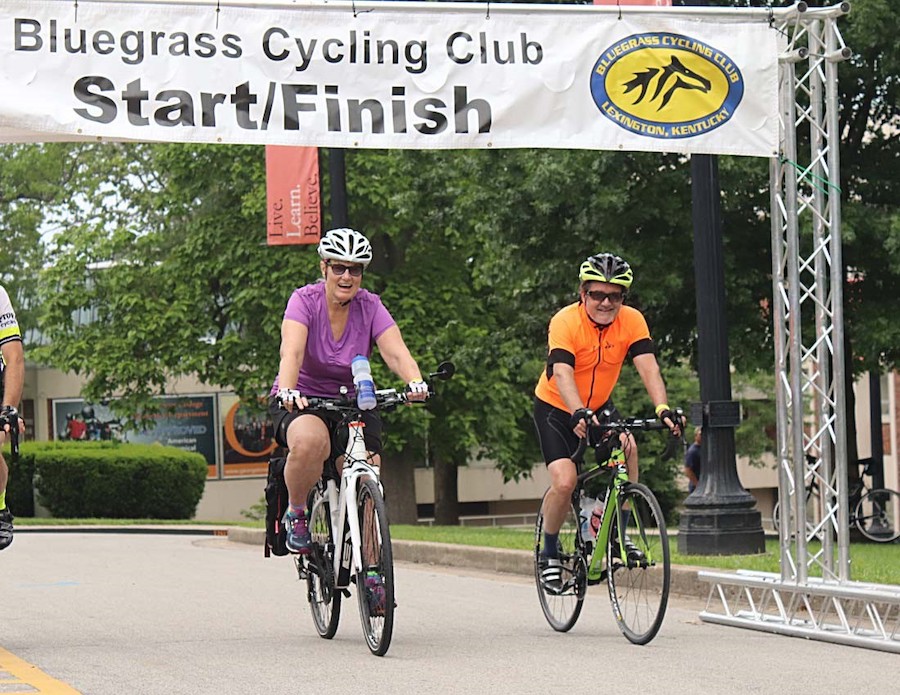
When some hear the term e-bike, they picture an electric scooter or motorcycle, but electric-assist bicycles are quite different. E-bikes provide varying levels of assistance to make pedaling easier, but they don’t replace it. Picture a traditional bicycle with the addition of a motor, a battery and a controller. Sensors detect cadence and load on the pedals, and add motorized assistance when the load is greatest, such as when you’re on a steep hill or in a strong headwind.
Some people in the bicycling world call this technology a “cheater bike,” but without it, many riders with health challenges—including me—would not be able to cycle at all.
Until recently, the added motor and battery weight meant that most e-bikes were built on heavy mountain or commuter bicycle frames. Recent innovations have shaved off a few pounds, and it’s now common to find lighter road and gravel bikes with pedal-assist.
My “regular” bike weighs close to 20 pounds, but my e-bike weighs 45 pounds. On flat and downhill trails, I often ride without any electric assist, effectively riding a 45-pound bicycle!
DON’T MISS: Learn more about e-bikes in our Trail-Building Toolbox
E-Bike Tips for the Trail
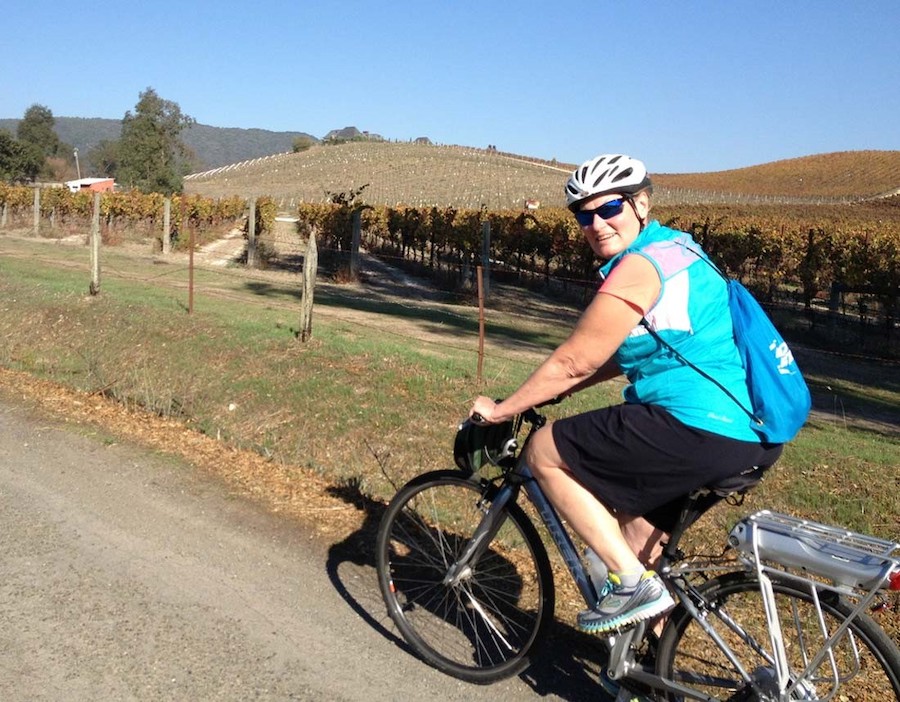
1. Extending Your Range
When possible, I ride with no or minimal assistance to extend my range. Battery life can be a huge issue for e-bike riders seeking longer treks, so be sure to look for one that maximizes the mileage per charge. For distance rides, I average 70 to 100 miles per charge off a single battery.
While electric bikes are common in Europe and Asia, e-bikes have just begun to catch on in the last couple years in America. Manufacturers are responding to the increased demand with more efficient motors and batteries.
2. Acquiring an E-Bike
E-bikes tend to cost more than most traditional bicycles; you could spend anywhere from $900 to more than $7,000 depending on features. You may save money by converting a traditional bicycle to electric or finding a used e-bike.
Decide on your personal riding goals, research appropriate options, and find a bike shop that offers different e-bike models to try. Nowadays, most shops have at least one model, but the shops most qualified for advice and service offer multiple models.
3. E-Bike Variations
Since I love to ride both trails and the road, I purchased a gravel e-bike with a long-life battery and drop handlebars (I prefer that riding position). My motor is a mid-drive, located in the center near the pedals, with four levels of assist.
Read up to explore different options for motors, battery location and classes of e-bikes. Be sure to research your local electric bicycle laws as well. Although e-bike ridership in the United States is growing, most states are playing catch-up with regard to crafting usage laws, and many trails do not permit motorized use of any kind.
4. Using Safe Speeds
Obviously, no matter what type of bike or trail you’re on, it’s important to use safe speeds and be sure to practice trail etiquette at all times. After all, it’s behavior, and not technology, that is often the greatest cause of conflict. Many trails have speed limits as well, so be sure and check the rules of your local trail before heading out. For more information on safe trail use, check out Rails-to-Trails Conservancy’s Share the Trail resources.
My idea of a perfect day is hitting the trail on my e-bike to enjoy the great outdoors with friends and family. After initially dreading questions and comments about my e-bike, I’ve become a proud, happy and active e-bike ambassador.
– Libby Rose
Related: RTC Supports the Passage of Model E-Bike Legislation
Related: Micromobility Devices on Multiuse Trails
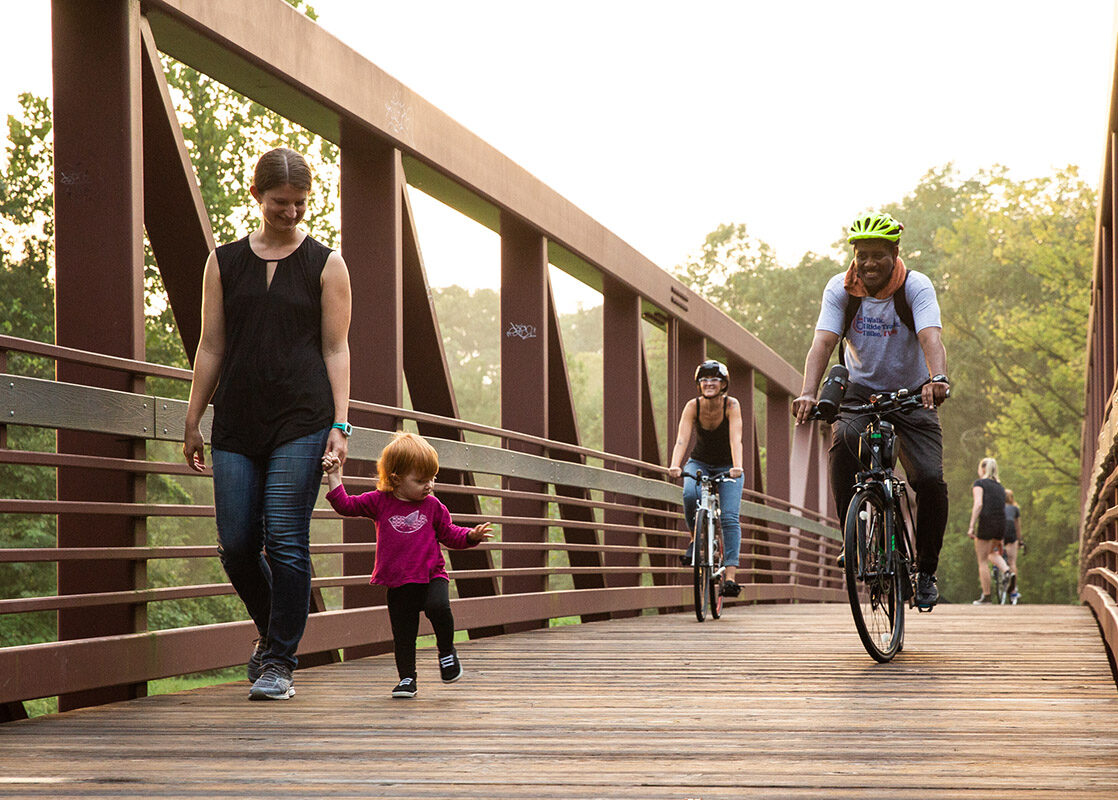
Donate
Everyone deserves access to safe ways to walk, bike, and be active outdoors.


